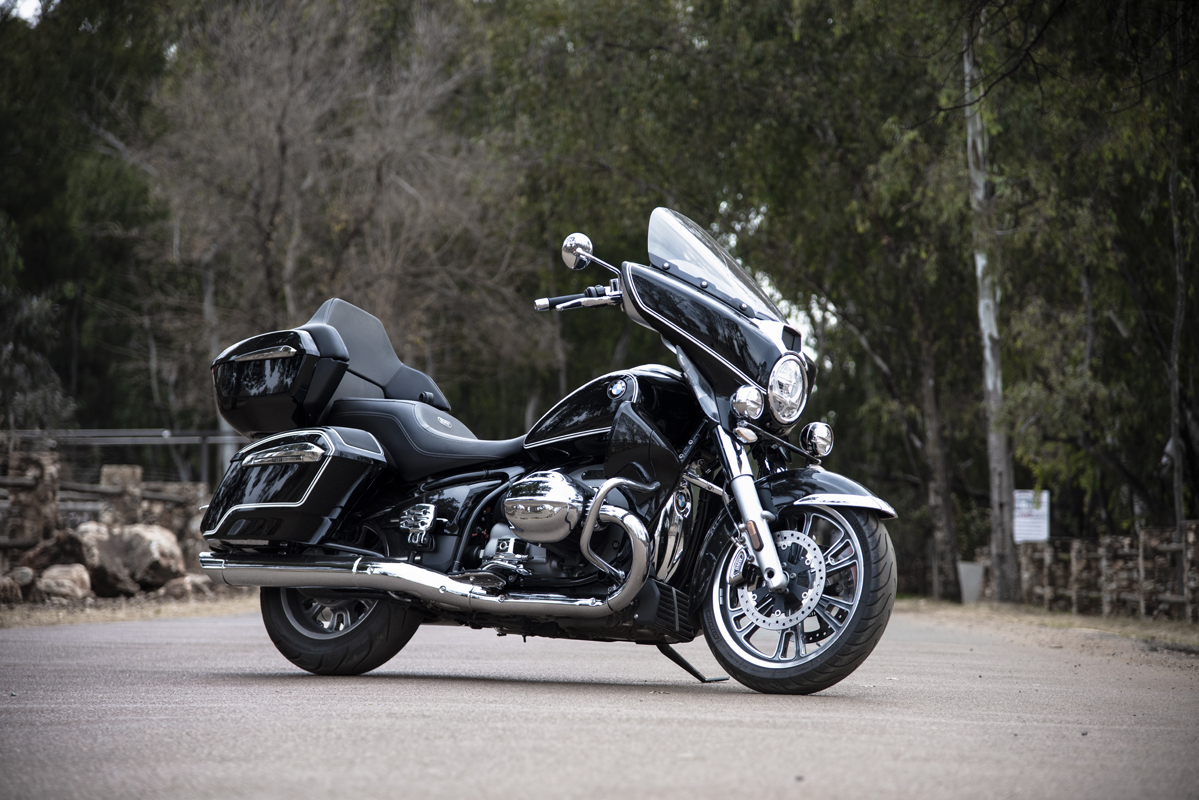
There can be no doubt that BMW when launching the R18, had the American market firmly in its sights. Here was a cruiser with the largest boxer-twin engine BMW has ever produced, coupled with classic lines and unmistakable style.
Equally, without doubt, is the fact that BMW had plans for the R18 beyond a simple, stripped-down cruiser and the Transcontinental is one of the results. What is not so clear is whether the new model is sufficiently effective as a touring model to turn buyers away not only from equivalent Harley-Davidson and Indian models but also from its own very well-established touring models in the R 1250 RT and K 1600 GTL.
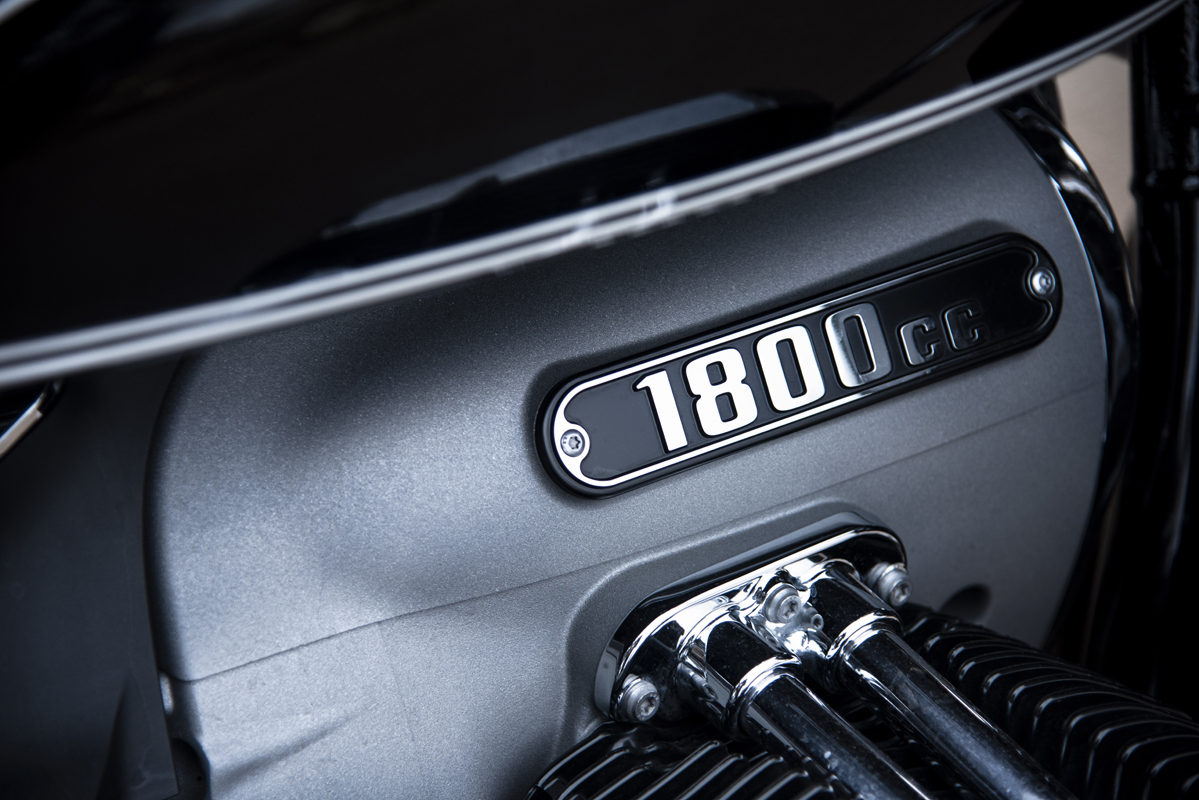
In creating the Transcontinental, BMW has gone down the familiar route of assuming bigger is better. Let there be no doubt, the R18 Transcontinental is big: very big. It’s also heavy.
But we are getting ahead of ourselves. At the heart of the R18 T (I really can’t type out Transcontinental every time) is the 1802 cc version of BMW’s boxer-twin, now with extra added torque reaction to catch out the unaware. It’s a massive engine, not unattractive and certainly distinctive, with huge torque and impressive smoothness: those balancer shafts must be working overtime and do seem to run out of influence over 120 km/h when vibrations can intrude on the experience.
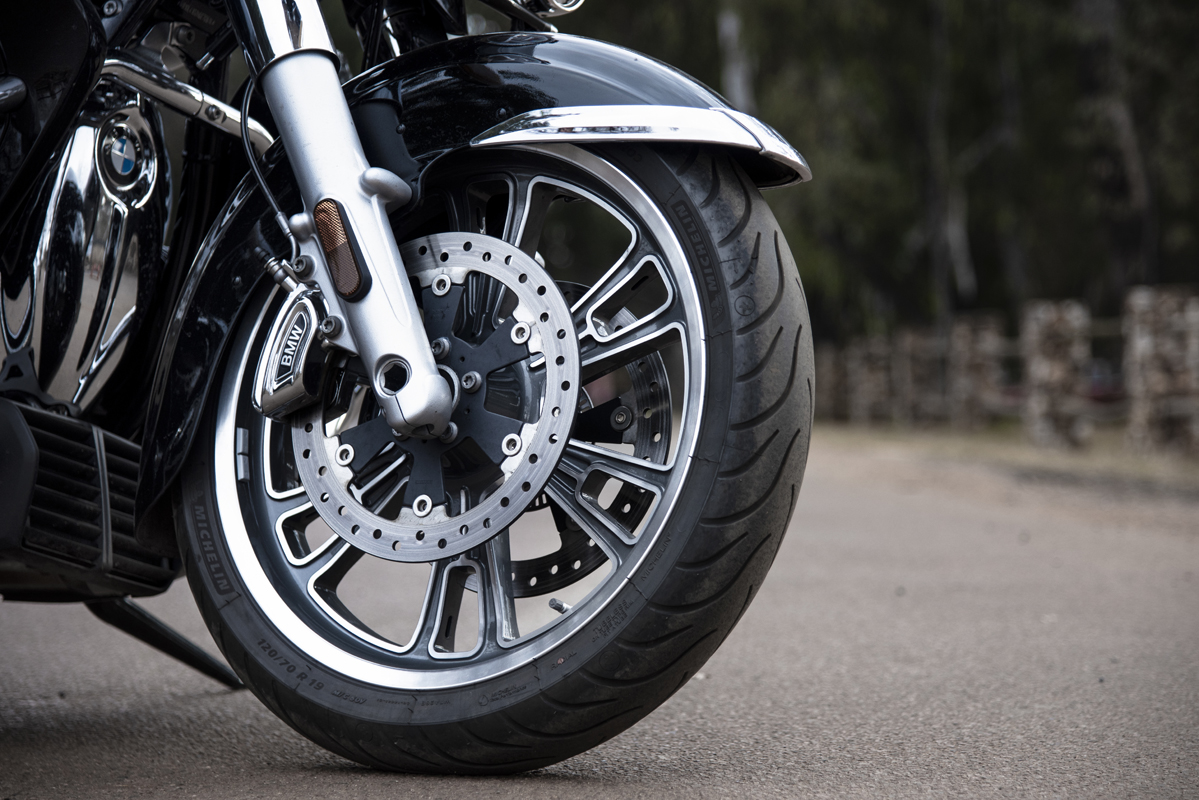
The Transcontinental is more than simply an R18 with luggage and fairing: the frame is new and the front wheel is now 19-inches and the rake and trail of the forks are designed for stability and the overall wheelbase has been shortened slightly to enable the bike to be good in the corners as well as in a straight line.
The fuel tank has also thankfully grown by around 8 litres over the standard R18, offering a much more suitable range for touring.
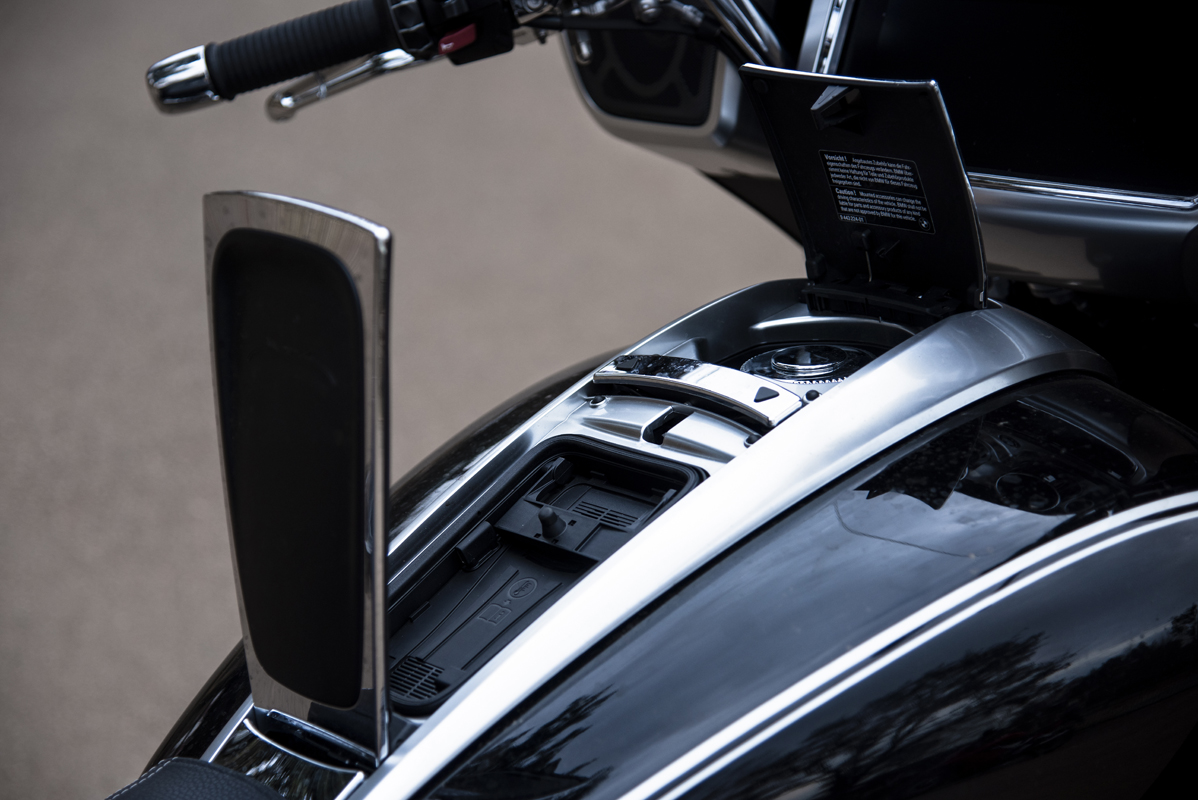
Added to the recipe is a huge batwing fairing, panniers and a top box which add to the practicality but also the weight. Actually, the panniers are really too small to be completely practical and the top box seems rather over-engineered and heavy which is certainly an argument that could be levelled at Honda, Harley and Indian top boxes as well. If you opt for the sound system, then the speakers mounted in both the panniers and the top box eat into the available space.
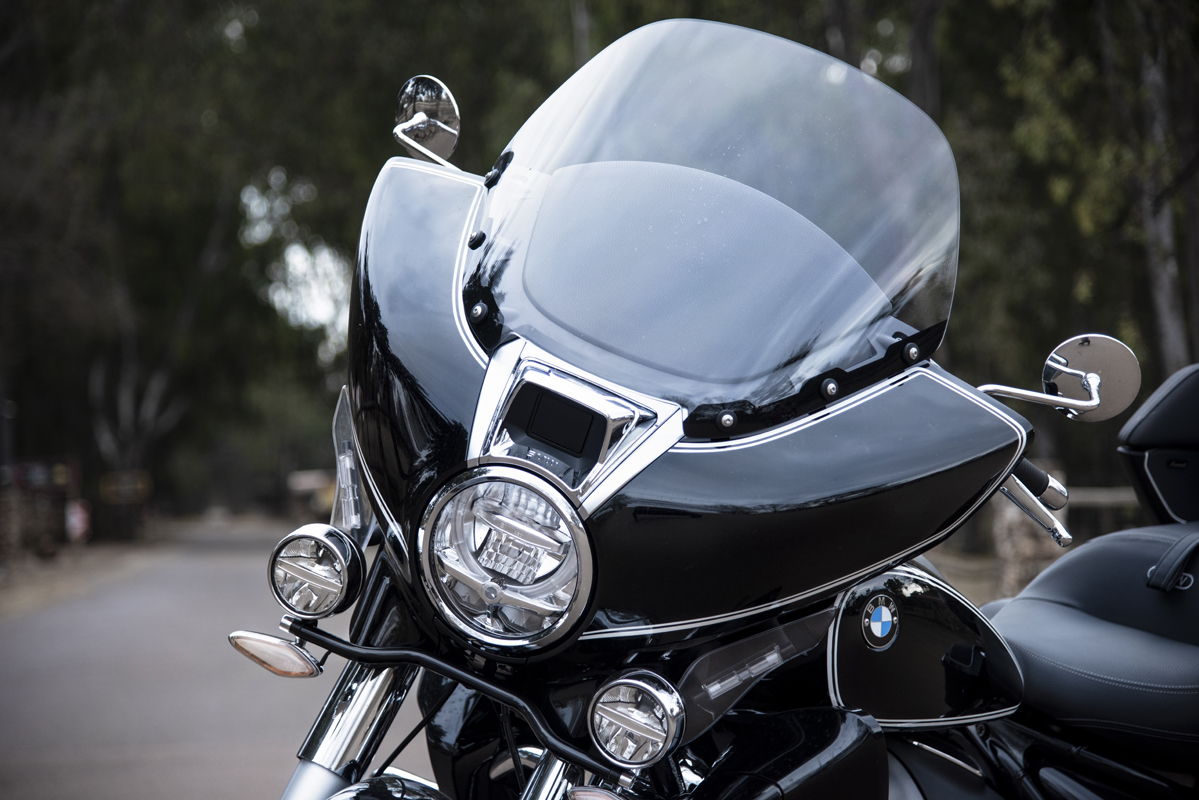
The cockpit is a satisfying place in which to sit, with good visibility over the bat-wing fairing. However, the small clear screen is unadjustable and thick, the top edge leaving a solid dark line right in the rider’s eye line, which seems to affect forward vision no matter the height of the rider. The omission of any sort of adjustment for height is surprising. Of course, there are different screen options in the catalogue but my feeling is at this price, an adjustable screen should be present without having to shell out more money.
You expect bikes such as this to be heavy but the BMW T feels incredibly heavy, to the point where you sometimes wonder if you will be able to pick it up off the side stand. Slow-speed manoeuvring is fraught with worry, especially if the surface is loose. It might not be any worse than an equivalent Harley or Indian but I just don’t remember feeling that insecure on a Chieftain or Road Glide. Indeed, the Road Glide is actually several kilograms heavier but it just doesn’t feel like it.
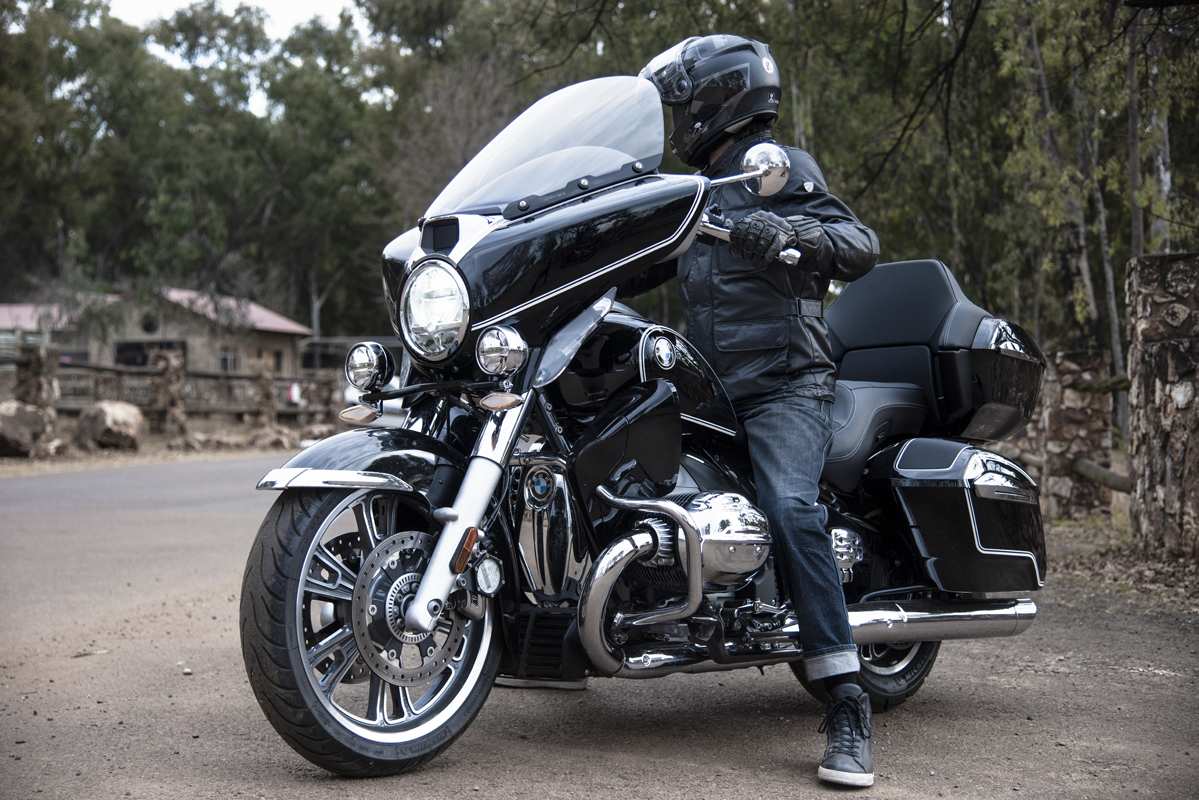
In traffic, the R18 T feels unwieldy and you are constantly aware that even the slightest lean angle when coming to a stop could result in overbalancing and laying the bike over. Thankfully, it doesn’t fall far thanks to the exhausts but you are not picking it up without assistance. And before you ask, yes, it did happen to me when my foot slipped on gravel where I stopped. Embarrassing? Not a little and it hardly helps confidence or nerves.
But to concentrate on such matters is to criticise the bike unnecessarily: this is a bike for the open road and, in that setting, it has impeccable manners. The weight that is such a handicap at low speeds simply steamrollers imperfections in the road surface and the suspension is remarkably well dialled to both cope with the weight and prevent the machine from feeling wallowy. Choose a line through long sweeping corners and the R18 T tracks round confidently. The steering is heavy and needs a healthy push on the bars but, once turning, the stability is impressive.
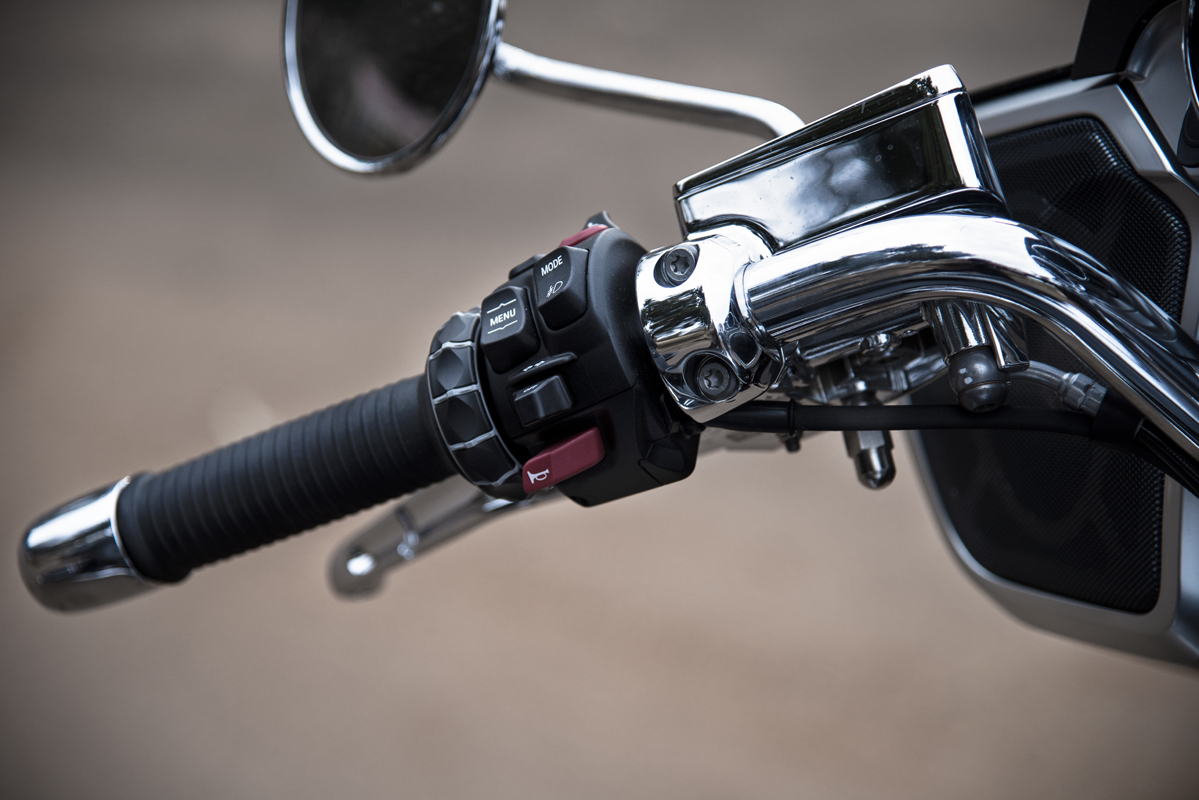
The engine has huge amounts of lazy torque, so much so that the bike feels slower than it actually is. A glance at the speed tells you that you are making very good progress indeed, even though the engine seems to be turning over at not much more than tick over. The standard silencers mute engine noise to the point of lack of character but it does make for very relaxed cruising.
The gearbox has, in line with most of these large touring bikes, a solid, clunky action that leaves you in no doubt that you have changed gear but the clutch action is light and, once on the move, the gearbox has to be stirred minimally due to the huge torque of the engine, which sits at 158 Nm (Power, incidentally, is 67 kW (or 90 bhp in old money).
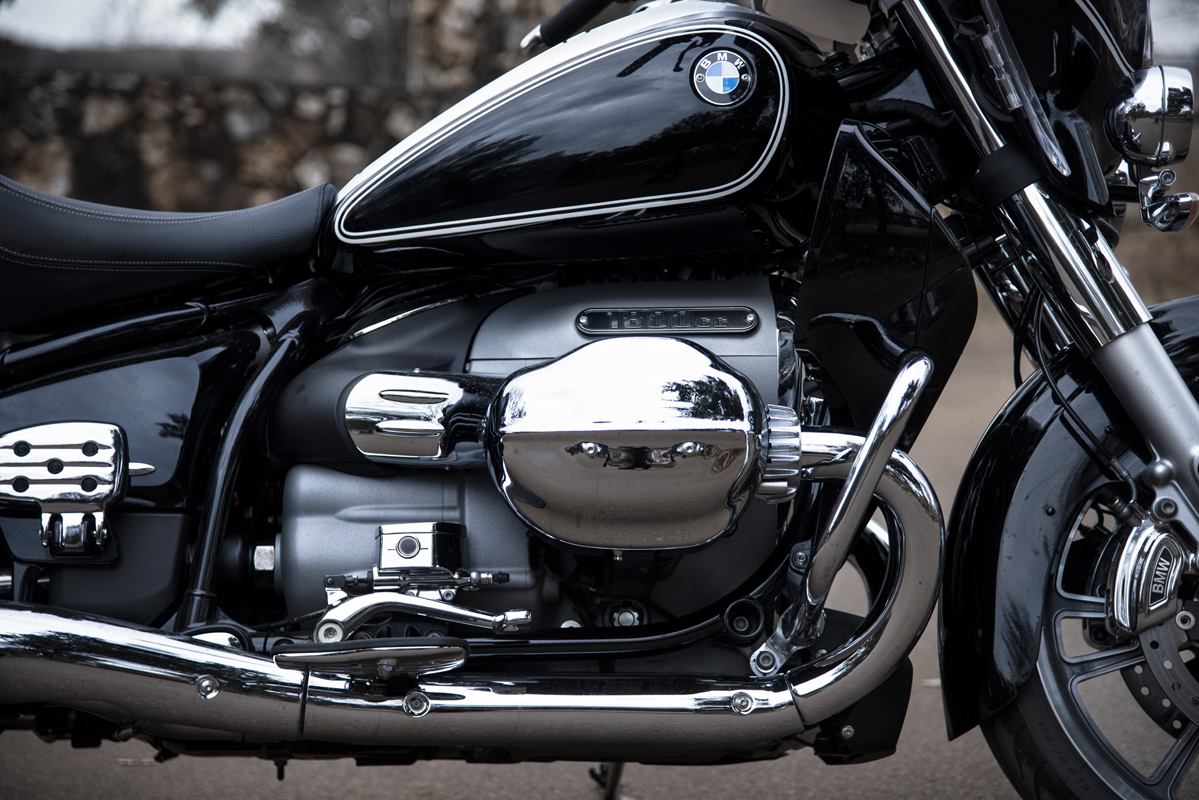
The gear lever is unusual in that it is far easier to stamp down with your heel on the rocking gear lever to change up than it is to try to insert your toes under the front of the lever, thanks once again to those enormous cylinders and the foot boards. It’s something you get used to quite quickly and is more comfortable than you at first think.
Comfort can not be faulted, for both rider and pillion and the fairing and screen do a good job of creating a bubble of calm air for both. Seats and grips are heated but, while the pillion has a rocker switch to turn the heated seats on or off, the rider has to perform a complicated process of menu selections which means too much time spent looking at the screen and not enough looking at the road ahead.
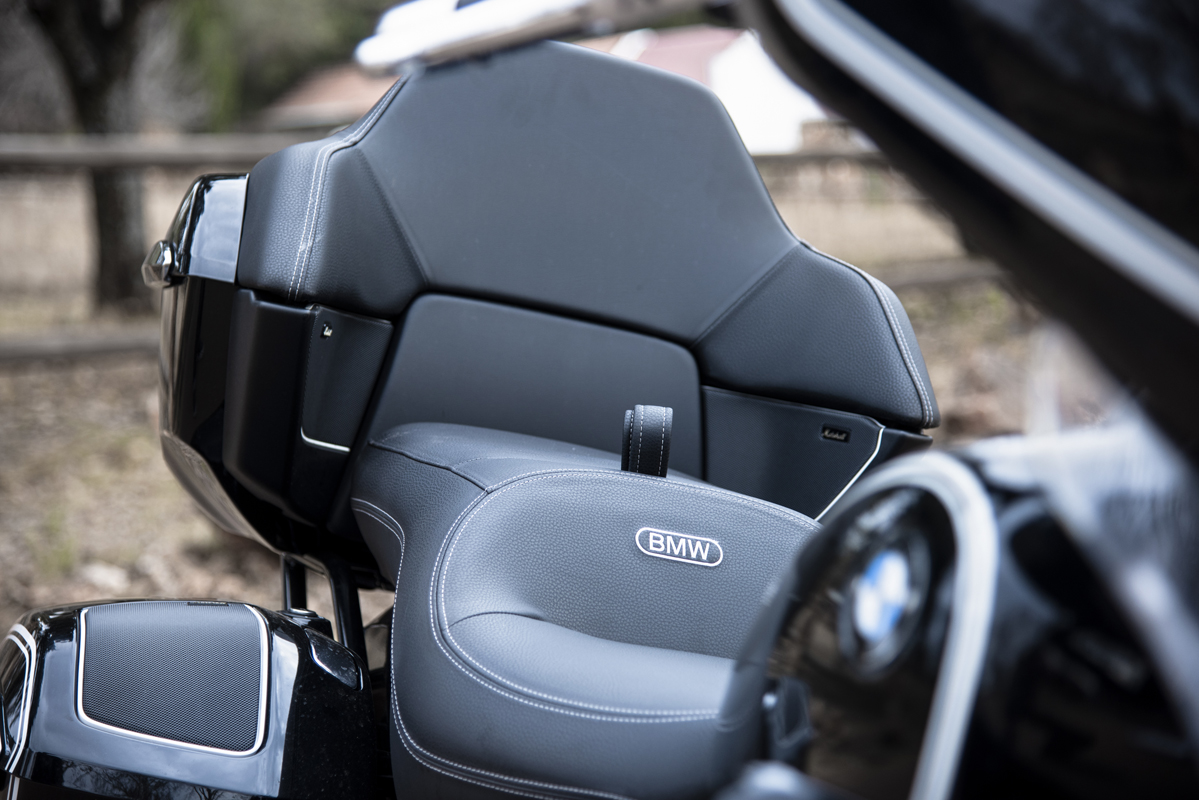
Of course, it could well be that the owner can create a shortcut for the heating so perhaps my criticism is unfounded.
The dash is well stocked not only with dials but also the huge 10-inch TFT screen as seen on the R 1250 RT. Unless you are using navigation, the screen feels a little under-utilised. One rather pointless dial records the percentage of power used and, therefore, the percentage of power available. I simply can’t imagine a situation where the rider might need to look at it, never mind that it sits at the far right of the instrument cluster and too far out of the rider’s line of sight. It’s a gimmick for the sake of it, not for any practical purpose.
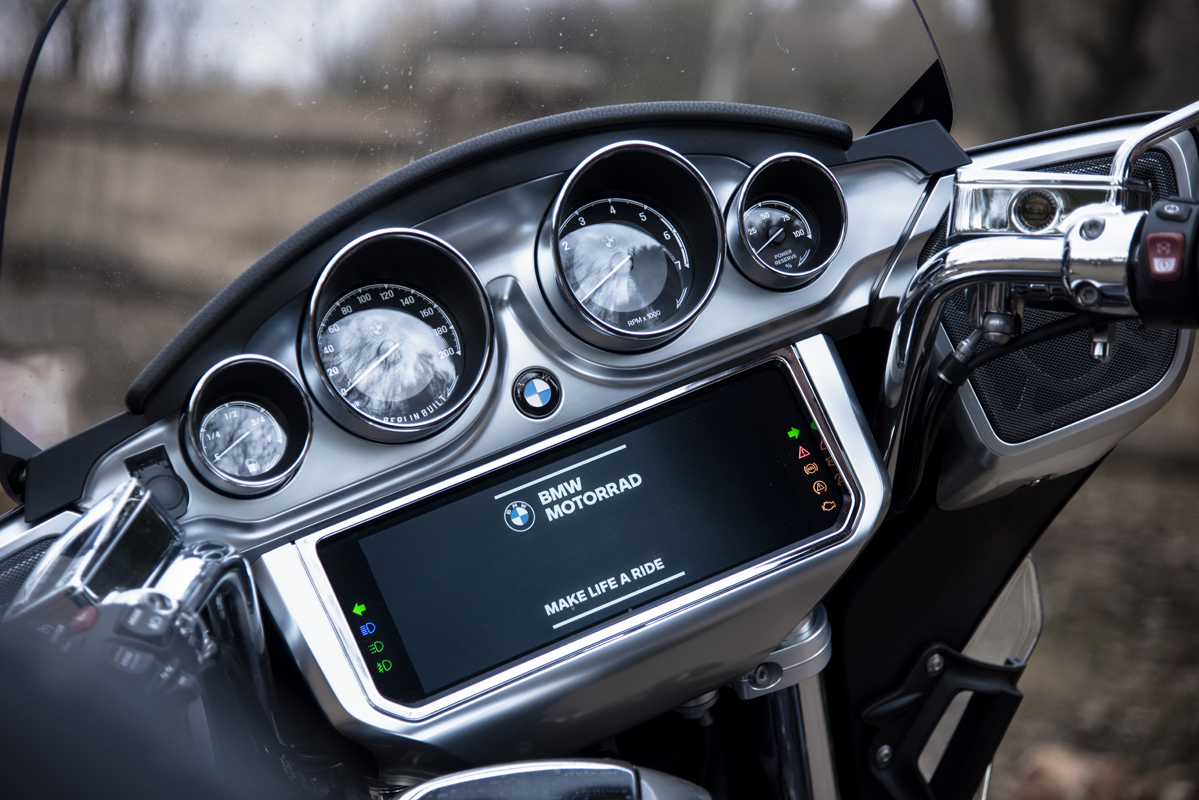
The configuration of the engine precludes any form of foot-forward riding position which won’t bother everyone but it does keep you locked in one riding position and stretching the legs occasionally is an exercise in contortion. It’s a consequence of the boxer engine that is common to all BMWs so-powered, so it would be unfair to concentrate unnecessarily on the R18 T. But it is something to consider if you are a rider who likes to stretch out when on the open road. (BMW includes cylinder-top leg rests in the parts catalogue, although getting your legs onto them might be beyond some riders!)
Similarly, it would be unfair to criticise the R18 T for its eye-watering price. The test bike, with the options of Marshall sound system (which you can’t hear – again nothing that isn’t the same for any large touring bike) and different wheels tops half a million Rand. If that sounds a lot – and it is – then it’s certainly in line with equivalent Harley-Davidsons and Indians.
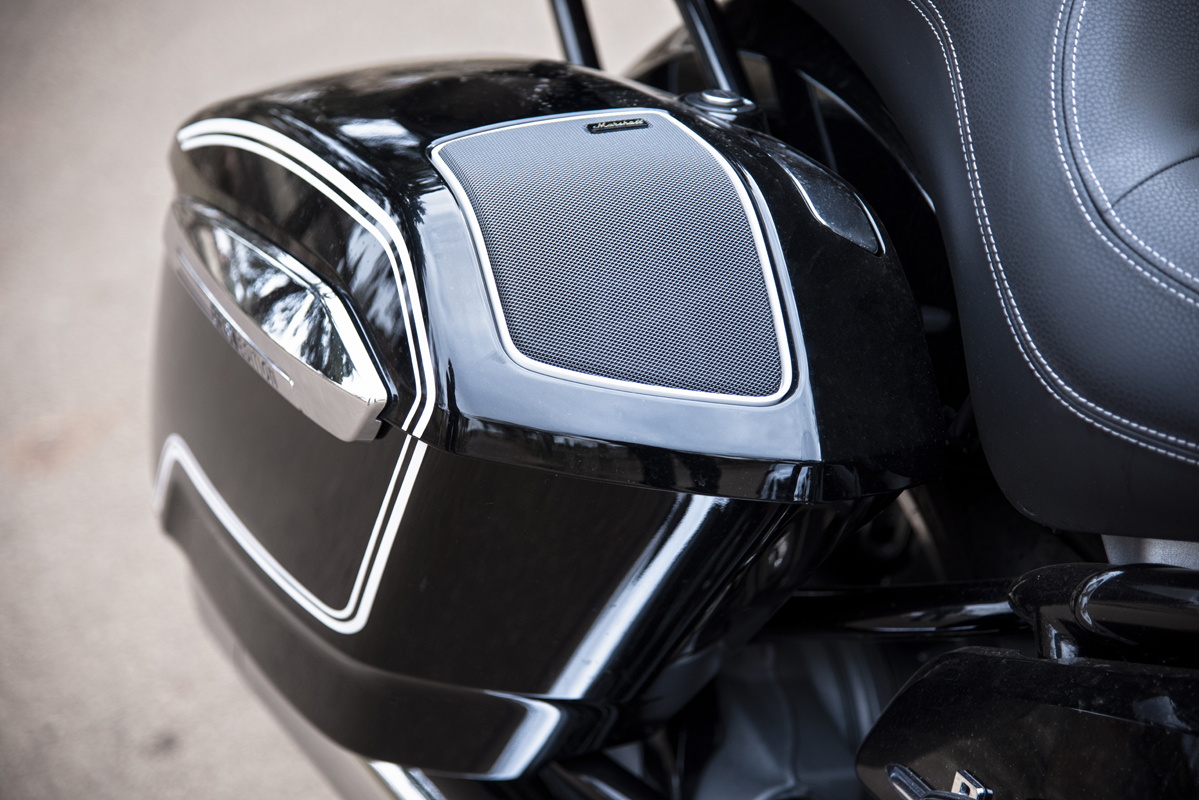
With the R18 Transcontinental, BMW has decided to attack Harley head-on, not something that a manufacturer undertakes lightly. In the heavyweight cruiser market, Harley-Davidson Street Glide, Road Glide, Electra Glide, Sport Glide and Road King models accounted for 84% of global sales in 2020! 73% of those were US sales, exactly the market BMW is targeting with the R18 T.
So, the R18 T needs to be good and it is. In terms of comfort, performance, handling, equipment, fit and finish, it can hold its head up high in the established company. For a first attempt at a traditional, large touring cruiser, BMW has performed miracles and created a convincing alternative to the standard bearers Harley and Indian. Whether the buying public thinks the same is another matter.
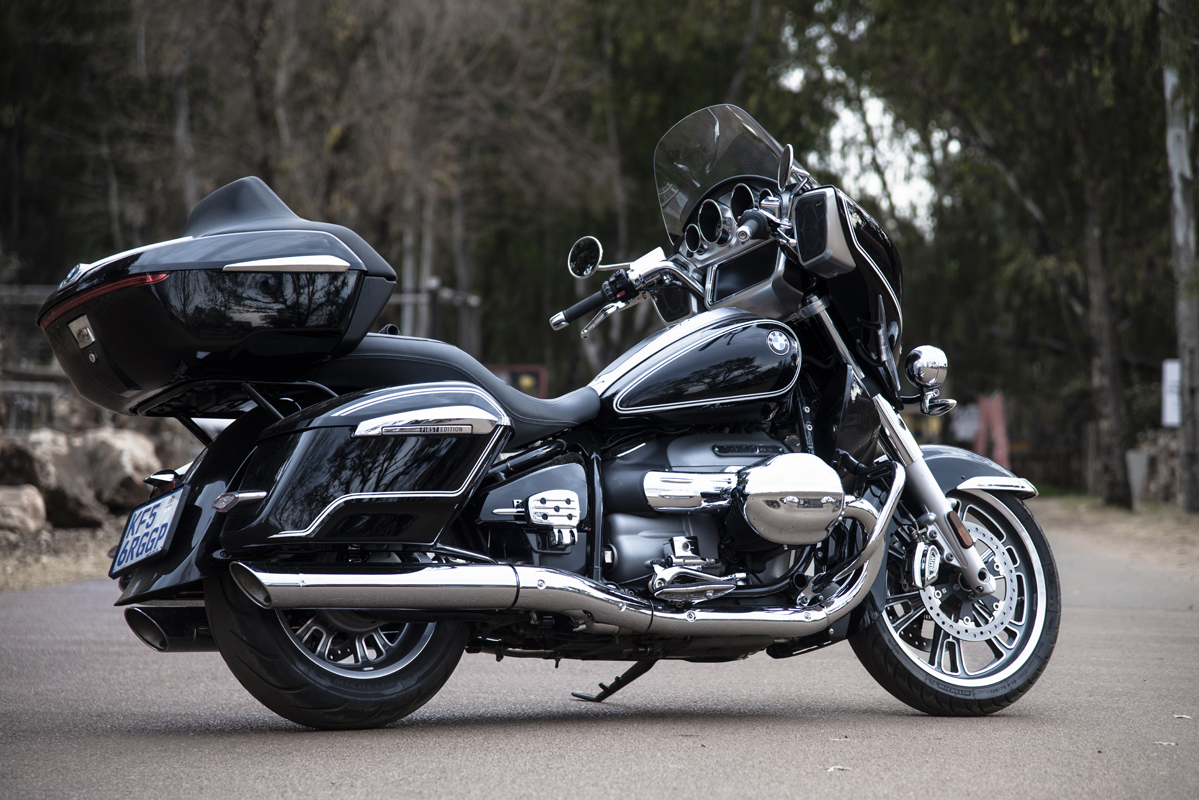
BMW R18 Transcontinental
For more information on the bike featured in this article, click on the link below…





